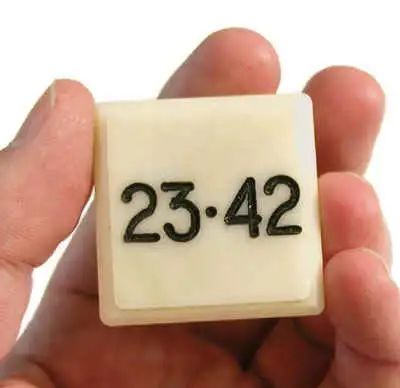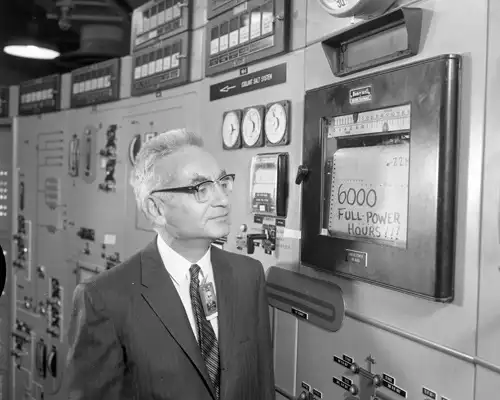
ORAU’s Museum of Radiation and Radioactivity is comprised of hundreds of items related to the scientific and commercial history of radioactivity and radiation. Included in the collection are many items from several radioactive incidents that have happened throughout history, including the Chernobyl disaster of 1986. The disaster began with the explosion of the No. 4 reactor of the Chernobyl Nuclear Power Plant near the city of Pripyat in the north of the Ukrainian SSR. After the incident, ORAU’s Museum of Radiation and Radioactivity got a hold of a light cover from the control room at Chernobyl. While a light cover from a nuclear power plant control room may be a small thing, this one has a storied history.
Here are four things you need to know:
1. The item was removed by a Soviet physicist
You may be wondering how a light cover from a nuclear power plant ended up in Oak Ridge. Well, that story is one that makes the item even more fascinating. The light cover was originally stolen by a physicist from the Soviet Union. While it’s unclear how he came into possession of the light cover, it is believed he retrieved it shortly after the accident. From there, the physicist gave the item to Dr. Alvin Weinberg, who was working for ORAU at the time. Weinberg was on a visit to Moscow when he encountered the light cover, and he brought it back to the United States with him.
2. Weinberg donated item to the training program

Dr. Alvin Weinberg
Since the early years of ORAU, the organization has instructed more than 30,000 physicists, scientists, engineers, educators, regulators and personnel in a variety of radiation safety and health physics courses through its Professional Training Programs (PTP). Once Weinberg returned with the light cover from Chernobyl, he sent it to the training programs to assess how radioactive it was. After testing was completed, Paul Frame, Ph.D., a health physicist and trainer at ORAU, added it to the collection that became known as the Museum of Radiation and Radioactivity.
3. Contamination was detected
So, what was the result of the tests that the PTP programmed performed on the light cover? When the first round of testing occurred, the cover had a lot of short-lived radioactive material. Using a process known as gamma spectroscopy, the presence of cesium-134, cesium-137, and cesium-144 was detected. Today, only the Cs-137 is still detectable, and residual contamination is minimal and fixed.
4. Light cover tracked by unique coding
As you can see from the photo of the light cover, there is a unique code attached to it. This particular light cover is listed as number 23-42. According to Steven Wootten, the number denotes the position within the core which is split into a grid of horizontal and vertical numbers. Therefore, the 23 is likely to be the horizontal position and the 42 the vertical position. One thing that is unique is that there are photographs online that show the inside of the control room at Chernobyl. There is a wall where the control panels are, and about a third of the light covers have been removed. While the explosion itself would not have knocked the light covers off the wall, taking them afterwards was a fairly common practice and you can view from the photographs where the position of the light cover was that can now be found at the museum.
Would you like to learn more about some of the other fascinating items inside ORAU’s Museum of Radiation and Radioactivity? Be sure to take the virtual tour on our website to explore everything the collection has to offer!